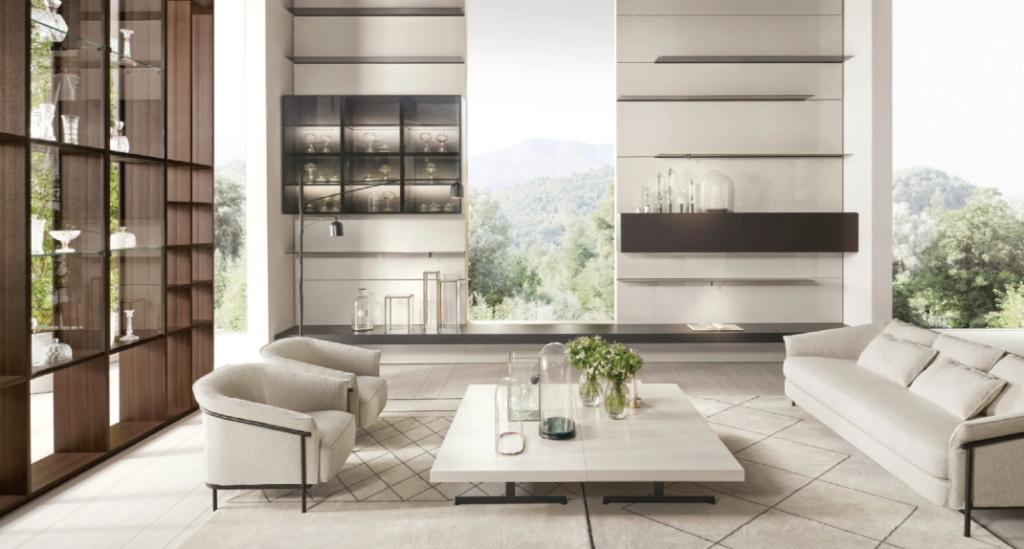Key Takeaways
- Infusing natural elements into home design can improve mental well-being.
- Simple tips, such as adding natural light and greenery, can transform any space.
- Eco-friendly and sustainable designs contribute to a healthier environment.
- Using textures and colors inspired by nature can enhance relaxation.
Nature-Inspired Living Spaces
In the frenetic pace of modern life, where digital screens and rapid schedules often dictate our routines, finding solace in our living spaces has gained paramount importance. With an ever-growing appreciation for the restorative power of nature, creating a living room that emulates the serenity found in natural settings has become a soothing retreat for many. Drawing on nature-inspired elements elevates our homes’ aesthetic and nurtures a sense of calm and introspection—qualities that foster a balanced and blissful existence. Transforming a living area into a nature-inspired oasis offers a refreshing visual palette and a profound connection to natural rhythms.
Embracing the natural world does not necessitate a move to the countryside or a mountain retreat. Even amid the busy urban landscape, such as in centrally located Seattle apartments for rent, it’s feasible to envelop your environment with botanical designs and earthen hues. The essence lies in bridging the gap between indoor comfort and outdoor beauty through mindful decor and lifestyle choices. By weaving natural elements into our everyday spaces, we create an ambiance that captures the soothing essence of the outdoors within the privacy of our homes.
Benefits of Natural Elements in Home Design
The psychological benefits of surrounding oneself with natural elements in the home are profound. Numerous studies affirm the calming effects of nature on the human psyche, revealing significant reductions in stress levels and a resultant boost to overall mental well-being. The tranquility invoked by natural elements such as plants and water serves as a balm for the mind, encouraging relaxation and mindfulness amidst the chaos of daily life. Incorporating natural components within our home design can create a haven that naturally induces peace and mental clarity, helping occupants decompress and refocus.
Beyond their visual appeal, houseplants serve a crucial functional role in enhancing indoor air quality. As natural air purifiers, plants absorb pollutants and excess carbon dioxide while releasing fresh oxygen, creating a healthier living environment. Improving air quality has numerous health benefits, including better sleep quality, increased energy levels, and sharper focus. This is particularly beneficial in urban settings where external air quality may be compromised.
Nature’s rich textures and organic beauty provide an unmatched aesthetic that enhances any space. From the rustic allure of untreated wood and the natural patterns of stone to the vibrant simplicity of live greenery, these elements create spaces that speak to timeless elegance and visual harmony. By embedding elements of the natural world into interior design, homes become more welcoming and reflective of the tranquil beauty found in nature.
Tips to Incorporate Nature Into Your Home
Integrating nature into your home environment can be both enjoyable and creatively fulfilling. These practical approaches allow for a seamless introduction of the outdoors into indoor settings, revamping your space with ease:
Maximize natural light in your home by replacing heavy curtains with lighter materials, introducing greenery, and using natural materials like reclaimed wood, stone, or jute.
Sustainable Design Practices
As environmental awareness grows, sustainable design practices in apartment rentals are becoming increasingly important. These practices focus on creating living spaces that minimize environmental impact while promoting energy efficiency and resource conservation. Apartments designed with sustainability often feature eco-friendly materials, energy-efficient appliances, and water-saving fixtures.
Natural lighting and ventilation are crucial in reducing reliance on artificial lighting and air conditioning. Green spaces, like rooftop gardens or community courtyards, enhance aesthetic appeal, promote biodiversity, and improve air quality.
For renters, choosing an apartment with sustainable design benefits the planet and their wallets. Energy-efficient systems can lower utility costs, while durable materials ensure long-term comfort. Whether it’s a commitment to recycling, using renewable energy sources, or creating a community-oriented design, sustainable apartments offer a responsible and modern approach to urban living, aligning with the values of eco-conscious renters.
The Power of Natural Textures and Colors
The natural colors and textures offer a rich tapestry for home decor that soothes and stimulates. Earthy tones like taupes, creams, and leafy greens create a calm palette that helps anchor the mind. Complementing these colors with textures—such as the soft weave of organic cotton or the intricate grain of wood—further enhances the sensory experience. These natural elements invite curiosity and interaction, encouraging inhabitants to appreciate the depth and beauty found in simplicity. By embracing nature’s palette, one can craft spaces that emanate tranquillity and sophistication, cultivating a serene retreat from the industrial tones of urban settings.
Creating a Cozy Outdoor Retreat
Outdoor spaces, whether expansive gardens or compact balconies, are a natural extension of indoor living space, offering direct opportunities to engage with the elements. Furnishing these spaces with cozy seating, atmospheric lighting, and various carefully curated plants can transform them into inviting retreats for relaxation or outdoor entertainment. These small touches enhance the outdoor ambiance and foster a reconnection with fresh air and the ever-changing elements, grounding homeowners in the natural world. These retreats provide an invaluable escape in urban contexts, offering tranquility amidst the fast-paced cityscape.
Balancing Elements for Holistic Living
Achieving a harmonious balance between nature and modern living elements paves the way for holistic well-being. A home that seamlessly integrates technological comforts with nature’s alive, organic forms supports a dynamic, productive, and restful lifestyle. This equilibrium fosters creativity and mental clarity, transforming living spaces into incubators for personal growth. Embracing this dual presence of nature and innovation creates a lifestyle that is fulfilling and embraced by design experts, as evidenced by cutting-edge interior design research. Ultimately, such a home becomes a sanctuary where rejuvenation and inspiration thrive.

